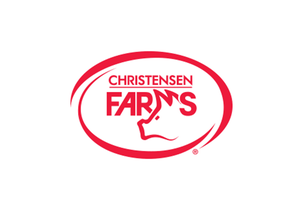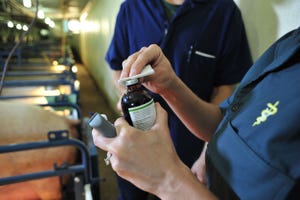December 13, 2013

Intensive management practices used on cattle feedlot sites can produce large concentrations of manure that have the potential to contain excess nutrients, antibiotics, and microorganisms. The U.S. Agricultural Research Service (ARS) says there is a risk that contaminants may end up in surface and ground waters, which means minimizing potential runoff is important to feedlot operators.
Kim Cook and Karamat Sistani, at the ARS Animal Waste Management Research Unit, in Bowling Green, Kentucky, along with collaborators at Western Kentucky University in Bowling Green and at ARS in Beltsville, Maryland, are using geographic information system (GIS) technologies to map the distribution of contaminants across feedlot sites. Their approach is unique in its use of the technology to determine not just how nutrients flow through the soil, but also the fate of bacteria and pharmaceuticals given to cattle to protect their health.
The team measured the levels of contaminants in soil samples collected from a five-acre feedlot used to grow out weaned calves for finishing. The site lies on a four-degree slope with a feeding and watering area at the highest elevation, a grassy grazing area in the middle, and a shallow retention basin and sinkhole at the bottom. Most rainwater percolates into the soil, but heavy rain can cause flooding that fills the basin with water from the grazing area.
The researchers analyzed the soil for nutrients, including nitrogen and phosphorus; antibiotics used to treat diseases and enhance growth; and for microorganisms commonly used to indicate fecal contamination in waterways and soils—Escherichia coli, Bacteroides, and Enterococcus. The study was one of the first to simultaneously measure all three types of contaminants—nutrients, antibiotics, and indicator microorganisms—and to use GIS technology to map patterns of contaminant distribution.
The results, published in the Journal of Environmental Quality (2013), showed that nutrients, microorganisms, and antibiotics all largely stayed in the feeding area at the top of the slope.
“Analysis of contaminants, particularly antibiotics and microorganisms, on this scale is not very common. Incorporating the GIS mapping allowed us to visualize the distribution of all three contaminants in new ways. We were surprised to find that all were distributed in a similar manner and there was no distinct flow pattern downhill from the barn,” Cook says. The findings suggest that cleaning up the site may be more manageable than previously thought, with efforts focused on soil remediation in the feeding and nearby grazing areas where contaminants are concentrated.
To reduce nutrient loads, forage grasses that take up nutrients are now being raised on part of the site. The researchers are also evaluating soil treatments (alum, biochar, and gypsum) in the most contaminated areas to see if they will bind with the nutrients, antibiotics, and microorganisms and give them time to decompose in the soil
Read more about this research in the November/December 2013 issue of Agricultural Research magazine.
You May Also Like


